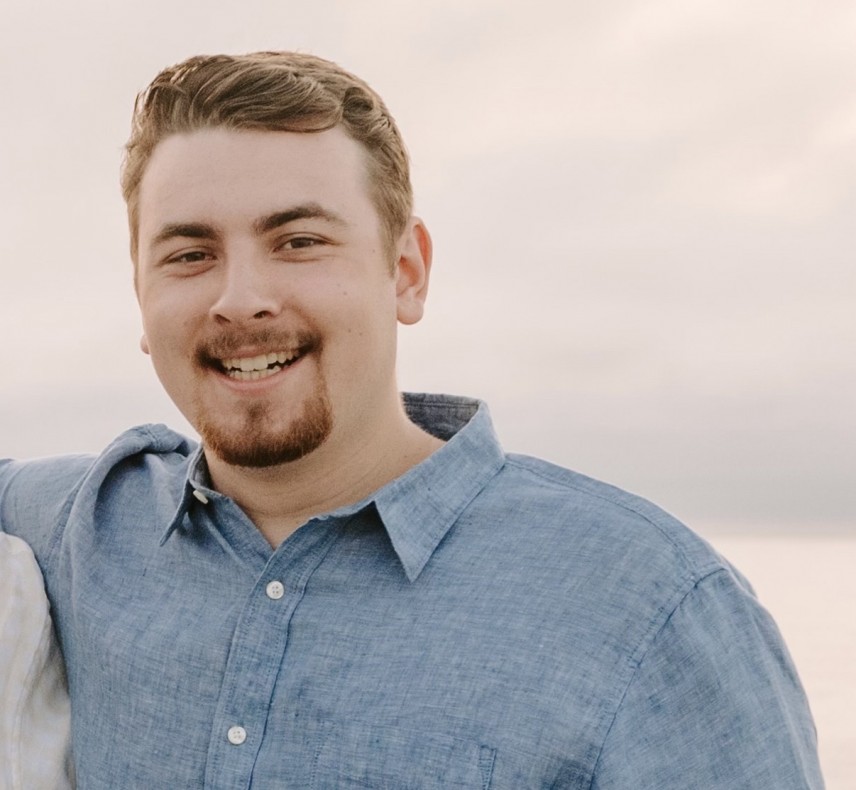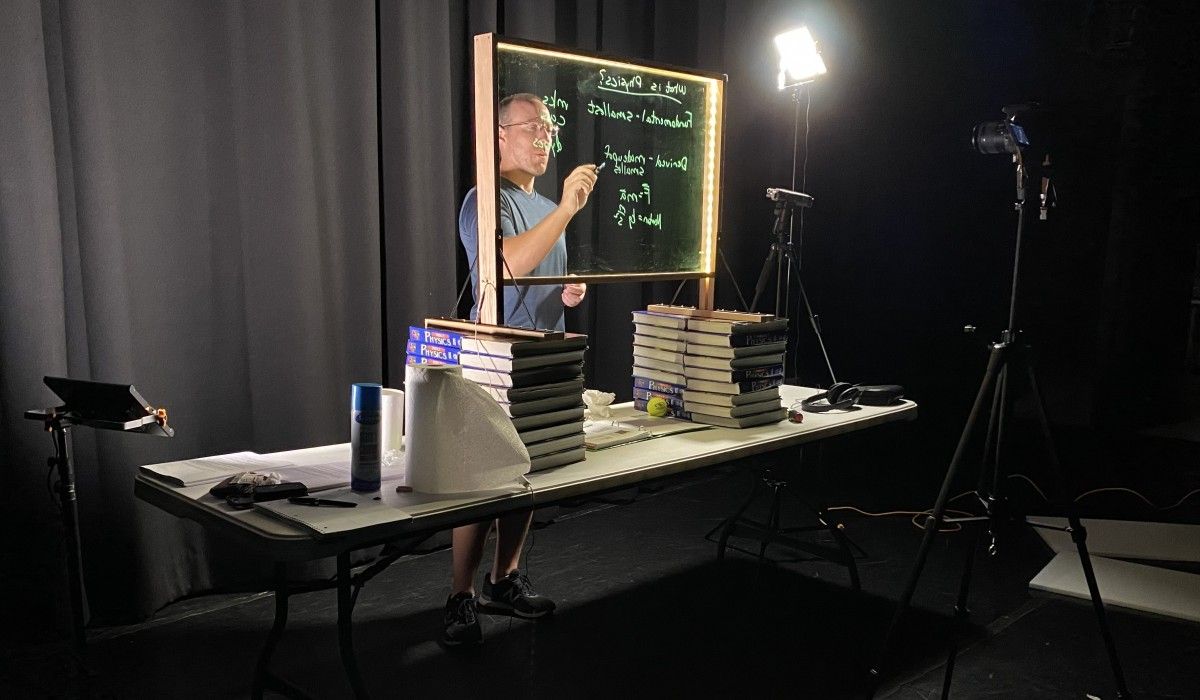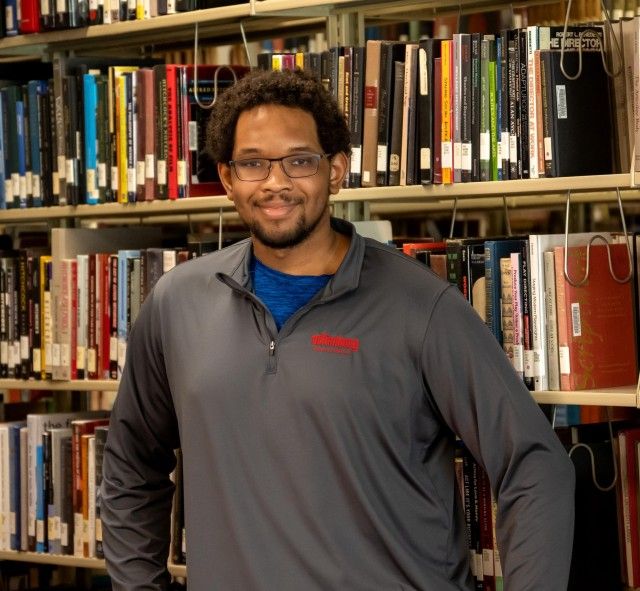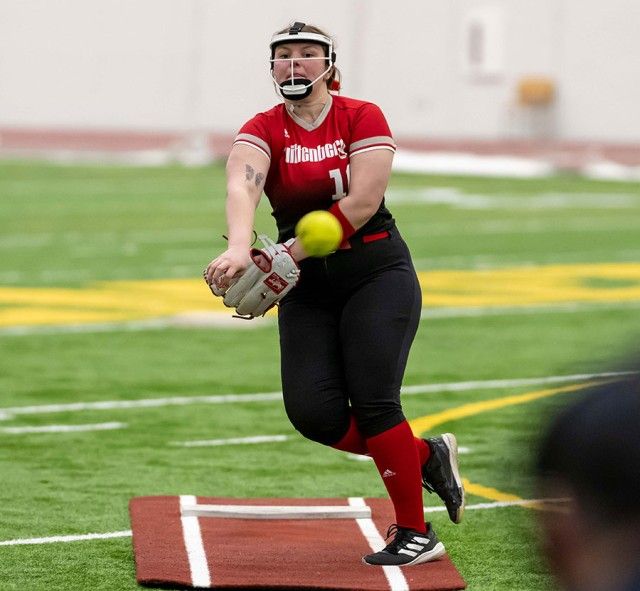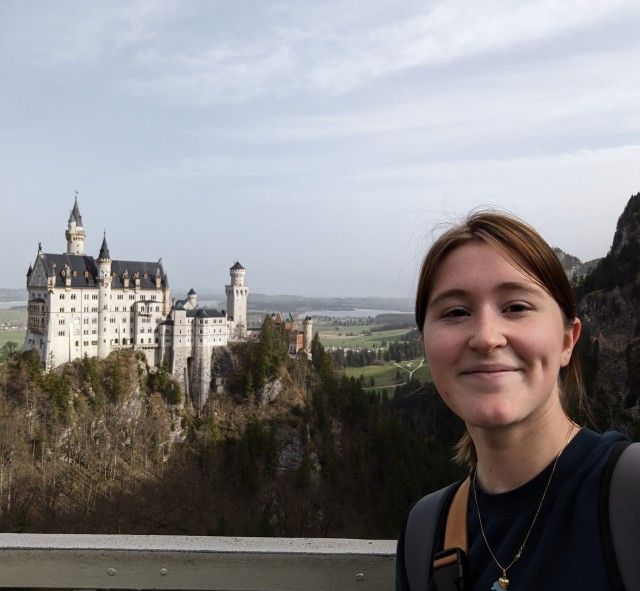With help from the State Library of Ohio Board, and Kristen Peters, interim director of the Thomas Library at Wittenberg, Jacob Durmis’ research paper will come to ‘light’ this semester.
In his paper, Durmis, Wittenberg class of 2023 and a physics major and education minor, investigated the impact of lightboard usage by teachers on student learning. He invited faculty to a presentation of his findings titled “Lightboards for Learning Initiative” and started to build support for his project, prompting Peters to make it into a grant proposal to the State Library of Ohio Board.
It was recently announced that the grant was approved through the Board’s American Rescue Plan Act (ARPA) Outreach Grants, which were awarded to 45 institutions. Of the total funding of $2,306,129, Wittenberg University will receive approximately $18,000 toward the creation of a lightboard studio in the Thomas Library, a project inspired by Durmis’ research.
“I was unsatisfied with the quality of education I was receiving, specifically in the quantitative subjects, via remote instruction during the COVID-19 pandemic and told my education advisor, Ms. Erin Hill (assistant professor of practice in Wittenberg’s education department), about it,” Durmis, from Corry, Pennsylvania, recalled. “Ms. Hill asked as a future educator what I would do different. The answer to the question was unknown to me at the time, but I carefully considered the question and came to the realization that the lightboard was the answer to the question.”
Durmis, who plans to become a high school physics teacher upon graduation, had previous experience with supplemental material via lightboard technology and found it very beneficial.
“Writing the research paper on why lightboard technology would benefit any educator, grounded in pedagogical principles, gave me even more appreciation for the technology and the benefits it can bring to both the student and educator,” explained Durmis, who is currently involved in the Society of Physics Students and is a member of Beta Theta Pi fraternity. “The lightboard provides an in-person like learning experience, as the instructor is clearly visible, and the notes are front and center. When watching a lightboard video, the student feels as if they are in class and the instructor is teaching directly at them, with the student being able to see all the educator’s gestures, motions, notes, demonstrations, and can watch the video at their own learning pace.”
Durmis said that at Wittenberg, specifically, a lightboard studio will “allow professors to pivot their instruction methods and adapt to the new ways students are accustomed to learning now, primarily through technology.” He also noted that “professors will be able to produce quality educational content, that the student knows they can trust, through big idea videos, extra practice, and review material, while also being able to run a synchronous online class that mirrors in-person instruction more than any other remote format.” Overall, “the opportunities Wittenberg can create with a lightboard studio are endless. It will allow Wittenberg to pass its light onto others.”
The lightboard studio includes a camera and a glass board that the presenter can use like a chalkboard to write on while facing the camera. The equipment automatically reverses the video image so the writing would appear left to right without the presenter having to turn their back on the audience. This method improves learner engagement and will be an asset that strengthens the collaboration between the library and faculty development programming at Wittenberg. Current space identified for the lightboard studio will be across from the IT helpdesk on the second (main) floor of Thomas Library.
“The purpose of this project is to create a studio where faculty, staff, and students can create instructional or promotional videos using a lightboard to create engaging videos that mimic the in-person experience our community expects in remote learning situations,” Peters said. “The COVID-19 pandemic highlighted the need for our community to have access to equipment to enable them to create videos to reach remote learners. This technology is very helpful for certain disciplines that utilize mathematical equations or diagrams where the writing or drawing is essential to improving comprehension.
“The University is working to create a Center for Teaching and Innovation,” Peters added. “The addition of a lightboard studio in the library supports this new campus initiative by providing faculty with a new space to test out classroom techniques. The library will collaborate with the Center for Teaching and Innovation to host workshops to introduce faculty to this new technology and help them integrate into the course management system. The library is an ideal place for the lightboard studio since we have staff working while the building is open to help report and troubleshoot any problems folks may have. The lightboard studio will benefit faculty by bringing a new tool to campus to diversify their teaching techniques. This technology could be used to create videos to supplement in-person learning or to create a fully-remote learning experience.”
The purpose of the ARPA Outreach Grant initiative is to assist libraries and their communities as they respond to the COVID-19 pandemic, as well as address economic and community needs, resulting from the pandemic, through equitable approaches. Utilizing Federal ARPA funds, received from the Institute of Museum and Library Services (IMLS), Ohio libraries of all types were encouraged to submit proposals for this competitive grant program revolving around the concept of outreach. Applications were accepted in three categories: outreach and education, community connections, and outreach initiatives.
Only two other college libraries in Ohio were granted funding: Columbus State Community College Library and Otterbein University. This grant initiative is just one of the many ways the State Library of Ohio is supporting libraries of all types with ARPA stimulus funds and assisting Ohioans as they continue to respond to the COVID-19.
This project was supported in whole or in part by federal Institute of Museum and Library Services funds, granted through the State Library of Ohio. The opinions expressed herein do not necessarily reflect the position or policy of IMLS or the State Library of Ohio, and no official endorsement by either agency should be inferred.


